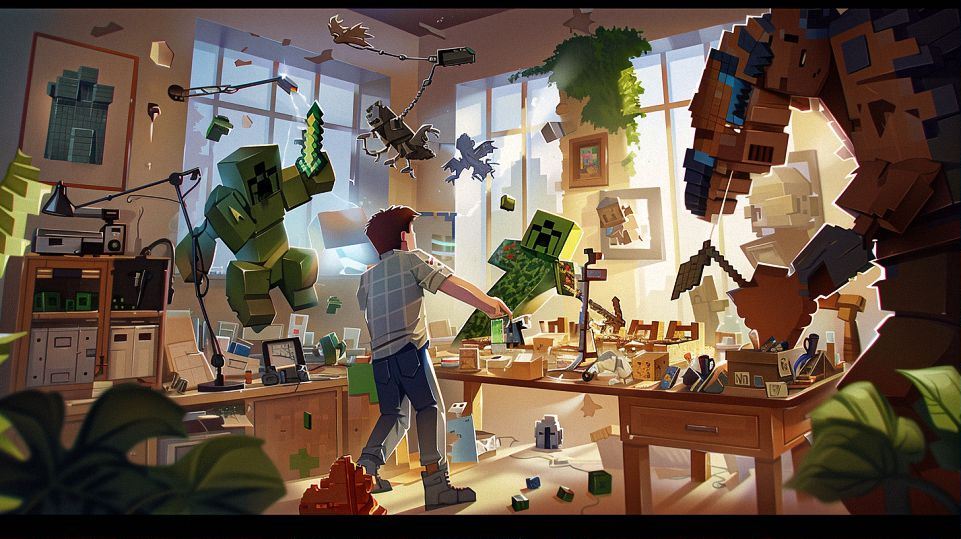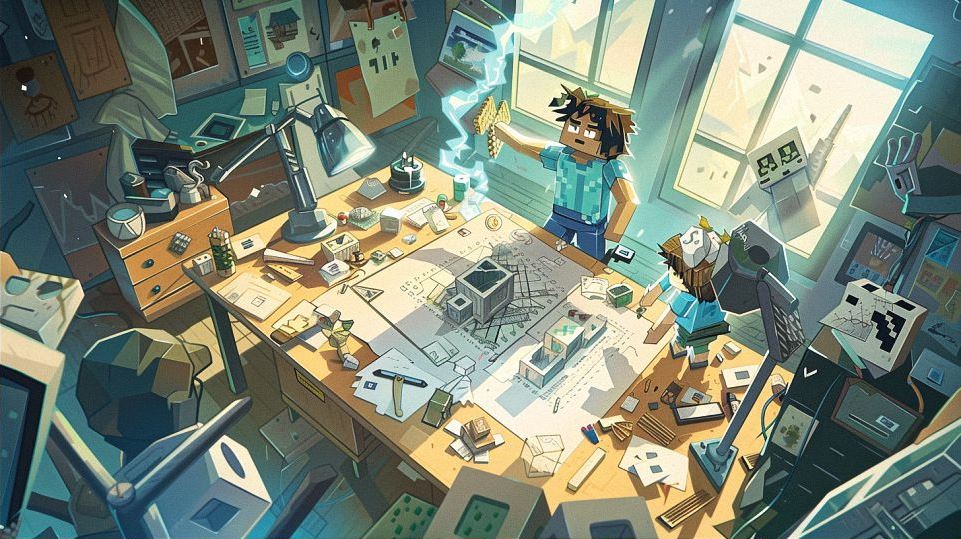How to Make Minecraft Animation: Expert Guide


Minecraft animation isn’t just about moving blocks on the screen—it’s about bringing your creations to life with movement, storytelling, and creativity. Let’s dive into the exciting world of Minecraft animation and learn how to get started on your animated adventures.
Contents
ToggleUnderstanding the Basics of Minecraft Animation
To begin your journey into Minecraft animation, you’ll first need to grasp the fundamental concepts that form the backbone of this creative process.
-
What is Minecraft Animation?
- Explore the definition of Minecraft animation and how it differs from static creations within the game.
-
Key Elements of Animation
- Learn about key animation elements such as frames, keyframes, timing, and easing to understand how motion is created in animations.
-
Choosing the Right Software for Animation
- Discover popular animation software options suitable for Minecraft animation, such as Blender, Mine-imator, or Adobe Animate.
Setting Up Your Workspace for Animation
Now that you have a basic understanding of Minecraft animation, it’s time to set up your workspace for optimal creativity and productivity.
-
Gathering Your Assets
- Collect Minecraft models, textures, and backgrounds that you’ll need for your animations.
-
Understanding Timeline and Layers
- Familiarize yourself with the timeline and layers within your chosen animation software to organize and control elements efficiently.
-
Exploring Animation Techniques
- Delve into animation techniques such as keyframing, tweening, and rigging to bring movement and life to your Minecraft creations.
Creating Your First Minecraft Animation
With your workspace set up and knowledge of animation basics, it’s time to dive into creating your first Minecraft animation masterpiece.
-
Storyboarding Your Animation
- Plan out your animation’s storyline, scenes, and character movements through storyboarding.
-
Animating Characters and Objects
- Use your chosen software to animate Minecraft characters, objects, and environments according to your storyboard.
-
Adding Sound and Effects
- Enhance your animation with sound effects, music, and voiceovers to create a fully immersive experience.
Polishing and Sharing Your Animation
Once your animation is complete, it’s essential to polish it to perfection and share it with the world.
-
Editing and Refining
- Fine-tune your animation by editing transitions, adjusting timing, and adding final touches for a polished look.
-
Exporting and Saving
- Learn how to export your finished animation in the appropriate file format and save it for future reference.
-
Sharing Your Masterpiece
- Explore platforms and communities where you can share your Minecraft animations with fellow creators and enthusiasts.
By following these steps and immersing yourself in the world of Minecraft animation, you’ll unlock endless possibilities to bring your imaginative creations to life in captivating animated adventures.

Creating Your Minecraft Animation
Now that you’ve laid the groundwork and understand the basics of Minecraft animation, it’s time to dive into the creative process and bring your animated vision to life. Let’s explore the essential steps and techniques to create captivating Minecraft animations that will dazzle your audience.
Designing Characters and Scenes
The first step in creating your Minecraft animation is to design your characters and scenes. This is where your imagination takes center stage, and you get to bring unique personalities and environments to life.
-
Character Design
- Start by sketching out your characters’ appearances, considering details like their outfits, facial expressions, and distinguishing features.
- Utilize Minecraft character models or create custom designs using tools like Blender or Mine-imator.
-
Scene Creation
- Imagine the setting for your animation, whether it’s a bustling cityscape, a serene countryside, or a fantastical realm.
- Build or import Minecraft scenes that match your storyline and characters, paying attention to details like lighting, terrain, and props.
-
Adding Personality
- Infuse your characters with personality through their movements, gestures, and interactions with the environment.
- Consider how each character’s actions contribute to the narrative and emotional impact of your animation.
Animating Movement and Actions
With your characters and scenes in place, it’s time to animate their movements and actions to bring your story to life.
-
Keyframe Animation
- Use keyframes to define key moments and poses in your animation, such as a character’s starting position, mid-action poses, and final positions.
- Experiment with easing functions to create smooth and natural movements, such as easing in and out for realistic transitions.
-
Character Animation
- Animate your characters’ movements, including walking, running, jumping, and interacting with objects.
- Focus on conveying emotions and expressions through facial animations and body language.
-
Scene Dynamics
- Incorporate dynamic elements into your scenes, such as moving objects, changing weather conditions, or day-to-night transitions.
- Add visual effects like particle effects, lighting effects, and camera movements to enhance the atmosphere and drama.
Adding Sound Effects and Music
To fully immerse your audience in your Minecraft animation, don’t forget the power of sound effects and music to enhance the viewing experience.
-
Sound Design
- Choose or create sound effects that complement the actions and events in your animation, such as footsteps, environmental sounds, and object interactions.
- Ensure that sound effects are synchronized with on-screen actions for maximum impact.
-
Musical Score
- Select background music or a musical score that sets the mood and tone of your animation, whether it’s adventurous, suspenseful, or heartwarming.
- Coordinate music cues with key moments in your animation to amplify emotional beats and storytelling.
-
Voiceovers and Narration
- If applicable, consider adding voiceovers or narration to convey dialogue, thoughts, or narration within your animation.
- Choose voice actors or use text-to-speech tools to bring characters to life through voice acting.
By following these steps and unleashing your creativity, you’ll create captivating Minecraft animations that entertain, inspire, and showcase your storytelling skills to the world. Happy animating!

Polishing and Sharing Your Animation
Congratulations on completing your Minecraft animation! Now it’s time to add those final touches, polish it to perfection, and share your creative masterpiece with the world. Let’s dive into the exciting steps of polishing and sharing your animation to make it stand out and captivate your audience.
Editing and Enhancing
Before sharing your animation, it’s crucial to edit and enhance it to ensure a polished and professional look.
-
Fine-Tuning Transitions
- Review and adjust transitions between scenes or actions to ensure smooth and seamless animation flow.
- Use easing techniques to create natural and visually appealing transitions between keyframes.
-
Color Correction
- Check and adjust color balance, saturation, and contrast to enhance the visual appeal of your animation.
- Ensure consistency in color schemes throughout the animation for a cohesive look.
-
Text and Typography
- If your animation includes text or captions, review font styles, sizes, and animations for readability and visual impact.
- Experiment with text effects and animations to draw attention to important information or dialogue.
Adding Special Effects
To elevate your animation and make it more engaging, consider adding special effects that enhance the storytelling experience.
-
Particle Effects
- Incorporate particle effects such as fire, smoke, or magic sparks to add depth and realism to your scenes.
- Adjust particle settings for intensity, direction, and duration to achieve the desired visual effect.
-
Lighting and Shadows
- Experiment with lighting effects to create dynamic shadows, highlights, and ambient lighting that enhance mood and atmosphere.
- Use lighting animations to simulate day-to-night transitions or dramatic lighting changes.
-
Visual Enhancements
- Explore visual enhancements like motion blur, depth of field, and camera effects to add cinematic flair to your animation.
- Adjust visual settings to focus attention on key elements or create visual storytelling cues.
Exporting and Saving
Once you’re satisfied with the polished look of your animation, it’s time to export and save it in the appropriate format for sharing and future reference.
-
File Formats
- Choose the optimal file format for your animation, considering factors such as quality, file size, and compatibility with sharing platforms.
- Common file formats for animations include MP4, MOV, and GIF, each offering different advantages based on your needs.
-
Resolution and Quality
- Select the resolution and quality settings that balance file size with visual clarity and detail.
- Aim for high-definition (HD) or 4K resolution if applicable, ensuring your animation looks crisp and professional.
-
Saving Backups
- Always save backup copies of your animation files to prevent data loss or corruption.
- Store backups on reliable storage devices or cloud platforms for easy access and protection against unforeseen issues.
Sharing Your Masterpiece
Now that your animation is polished and ready, it’s time to share it with the world and showcase your creativity and storytelling skills.
-
Online Platforms
- Upload your animation to popular online platforms such as YouTube, Vimeo, or social media channels to reach a wide audience.
- Optimize your video title, description, and tags with relevant keywords to improve visibility and searchability.
-
Community Engagement
- Share your animation within Minecraft communities, forums, or fan groups to connect with fellow enthusiasts and receive feedback.
- Engage with viewers through comments, polls, or live streams to build a supportive and interactive community around your animation.
-
Promotion and Collaboration
- Promote your animation through cross-promotion with other creators, collaborations, or participation in animation contests or showcases.
- Leverage social media marketing strategies, such as teaser trailers, behind-the-scenes content, or interactive promotions, to generate buzz and interest.
By following these steps and leveraging the power of editing, special effects, and strategic sharing, you’ll elevate your Minecraft animation to new heights and captivate audiences with your storytelling prowess. Happy animating and sharing your creative journey with the world!


